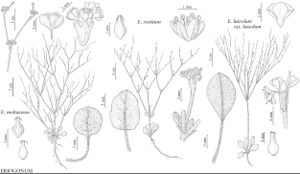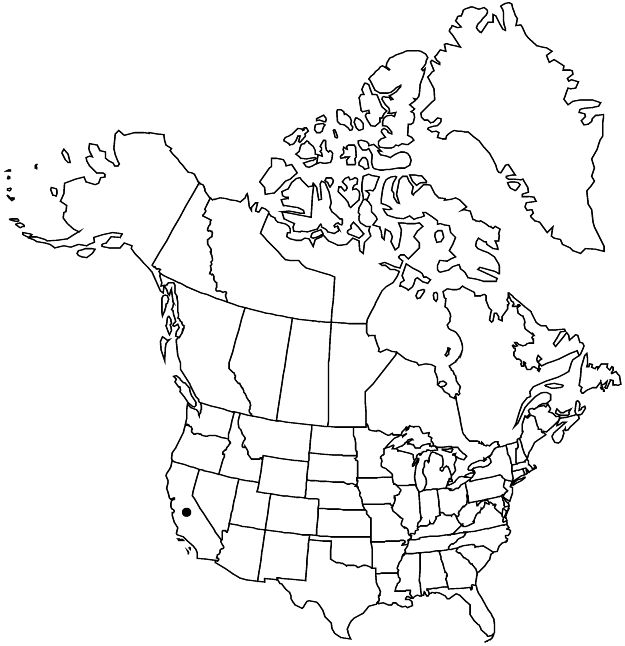Eriogonum vestitum
Leafl. W. Bot. 2: 42. 1937.
Herbs, erect, (0.5–) 1–4 (–5) dm, tomentose, greenish gray to gray. Stems: aerial flowering-stems erect, 0.5–1 dm, tomentose. Leaves basal and cauline; basal: petiole 1–4 cm, thinly tomentose, blade narrowly oblong to obovate, (1–) 2–4 (–5) × 1–2 (–3) cm, thinly tomentose and greenish abaxially, floccose to glabrate and greenish adaxially; cauline: petiole 0.5–2 cm, thinly tomentose, blade elliptic or rarely ovate, (0.7–) 1–3 (–4.5) ×0.5–1.5 (–3.5) cm, similar to basal blade. Inflorescences cymose, somewhat diffuse, 10–40 (–45) × 5–30 cm; branches tomentose; bracts 2–4 × 0.5–1.5 mm. Peduncles erect, straight, slender, 0.5–4 (–6) cm, tomentose. Involucres terminal at tips of slender branchlets proximally, not appressed to branches, narrowly campanulate, (1.5–) 1.8–2 × 1.5–2 (–2.2) mm, tomentose; teeth 5, erect, 0.3–0.5 mm. Flowers 1.5–2 (–2.5) mm; perianth white, glabrous but conspicuously pustulose; tepals monomorphic, narrowly elliptic to oblong; stamens included, 1–1.5 mm; filaments pilose proximally; styles 0.7–1 mm. Achenes brown, 3-gonous, 2–2.5 mm; beak papillose. 2n = 34.
Phenology: Flowering Mar–Nov.
Habitat: Clayey outcrops and slopes, mixed grassland communities, oak and pine woodlands
Elevation: 400-700 m
Discussion
Eriogonum vestitum is restricted to the Idria region of San Benito County, the Silver Creek Canyon and Mercey Hot Springs areas of Fresno County, and the Los Banos Hills in Merced County. It is closely related to E. eastwoodianum. Some individuals mimic E. gracile, and a clear distinction is not always possible with immature specimens.
Selected References
None.
Lower Taxa
"narrowing" is not a number."dm" is not declared as a valid unit of measurement for this property."dm" is not declared as a valid unit of measurement for this property.

